Extrema Ratio are well known for making knives that are built like a tank; heavy duty fixed blades and folders that will take everything you can throw at them in their stride.
When the new Mamba arrived for testing it was clear this was something quite different; I was struck by how slim this knife is, and by the special sheath with quick release lever locking system – a sheath so slim it is MOLLE compatible because slides directly into the loops of PALS webbing.
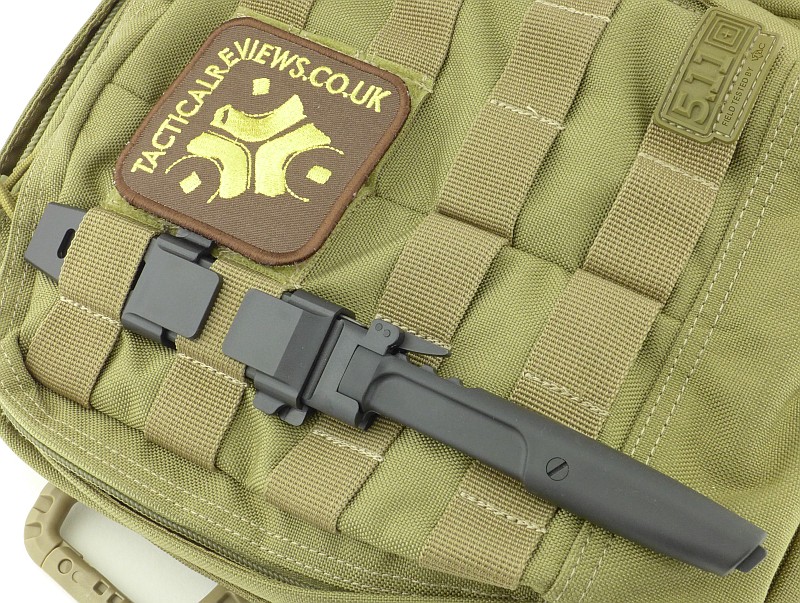
The Blade and Handle Geometry:
Most knife specifications have a basic description of the blade geometry, but in this section I will be taking a more detailed look at geometry and balance.
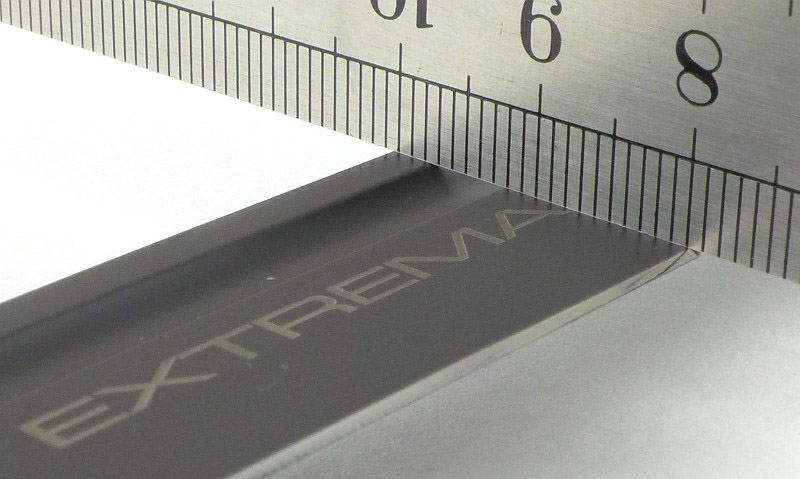
Using a set of gauges and precision measuring equipment including a Vernier protractor, callipers, fixed radius gauges and the unique Arc Master adjustable radius gauge (the one that looks like a crossbow).
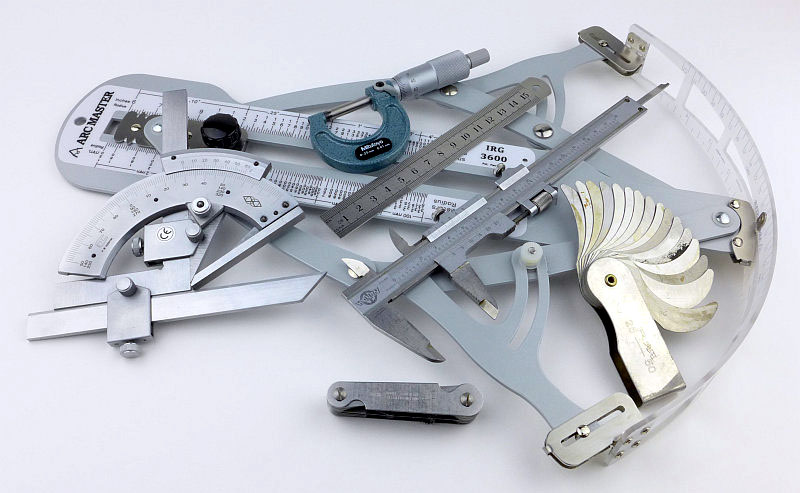
These measurements have been tabulated and are presented along with a few reference blades (8″ Chef’s Knife, 5.5″ Santoku and the popular Fällkniven F1).
Key aspects such as the primary bevel angle, grind type, blade depth, blade thickness, length, weight are detailed, along with balance information.
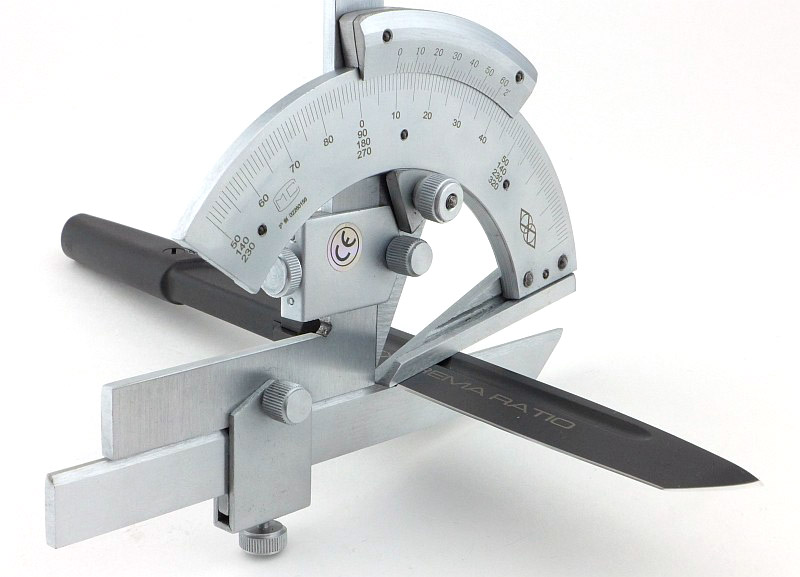
The ‘Balance relative to the front of the handle’ tells you if the knife will feel front heavy, or if the weight is in your hand (a positive value means the weight is forward of the front of the handle). The ‘Balance relative to the centre of the handle’ indicates how close to a ‘neutral balance’ the knife has in the hand.

In the case of full convex grinds the approximate centre of the grind is used for the primary bevel angle estimate.
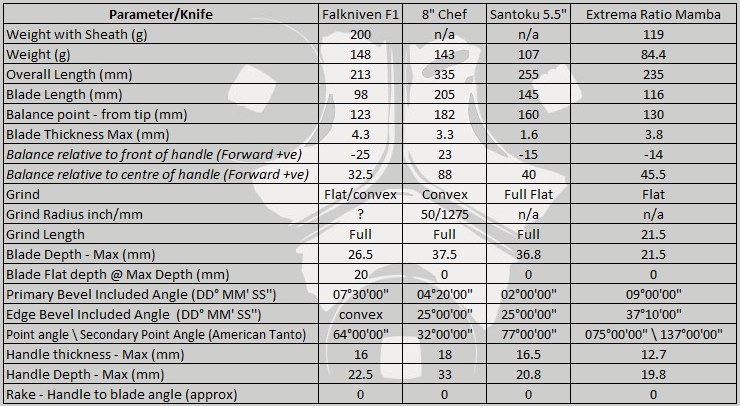
The blade is made from ACCIAIO BöHLER N690 (58HRC) steel.
A few more details:
The slimmest Extrema Ratio box I’ve come across.
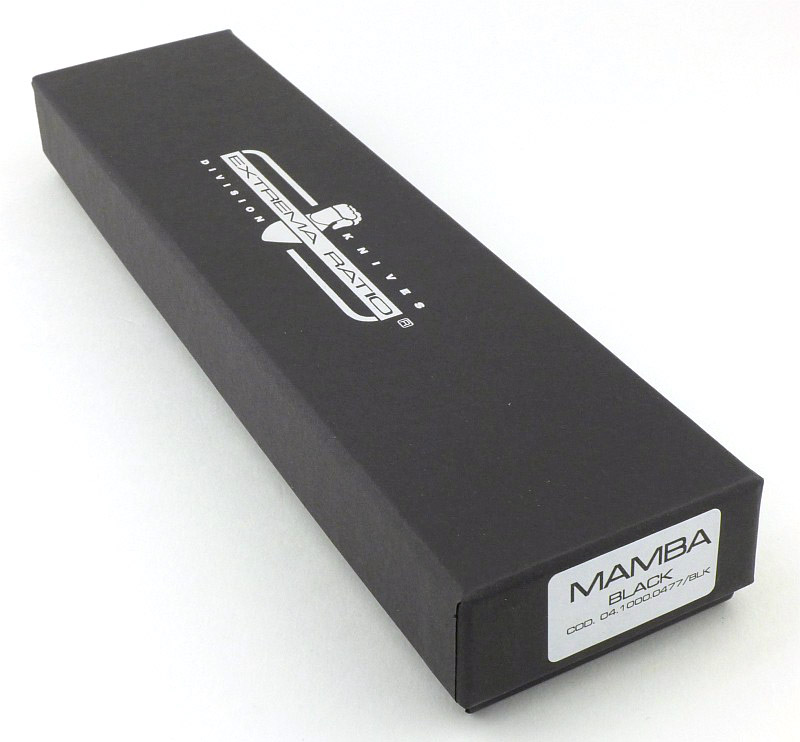
Taking the lid off; this is how the Mamba arrives.
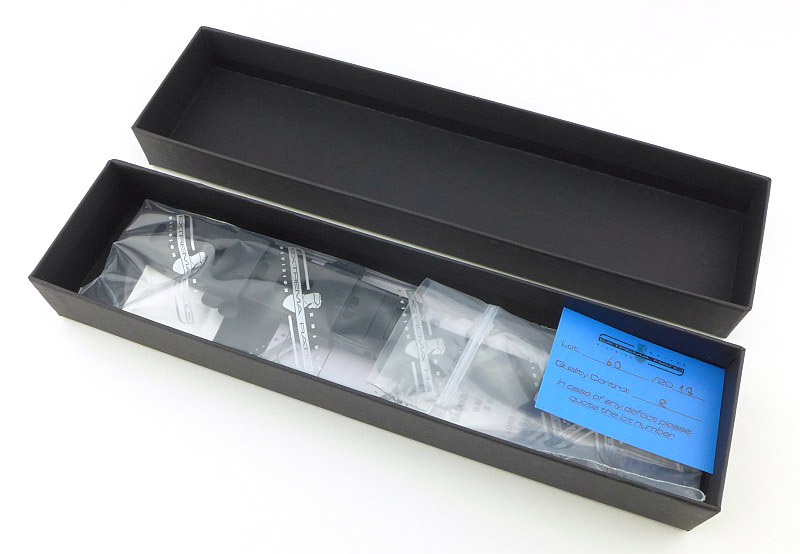
Included is the Mamba and sheath, with a quality control card and a couple of leaflets.
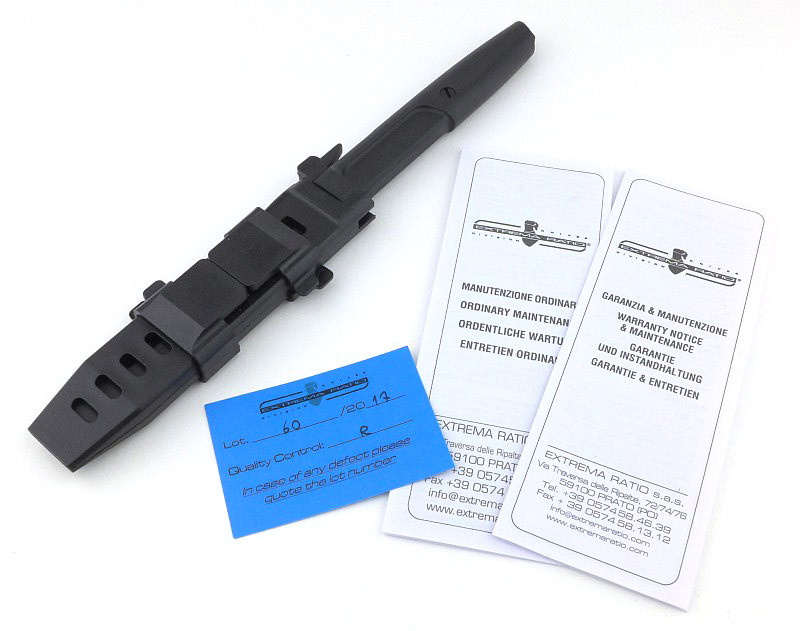
This really is something different from Extrema Ratio. Recognisable in styling, but definitely distinct.
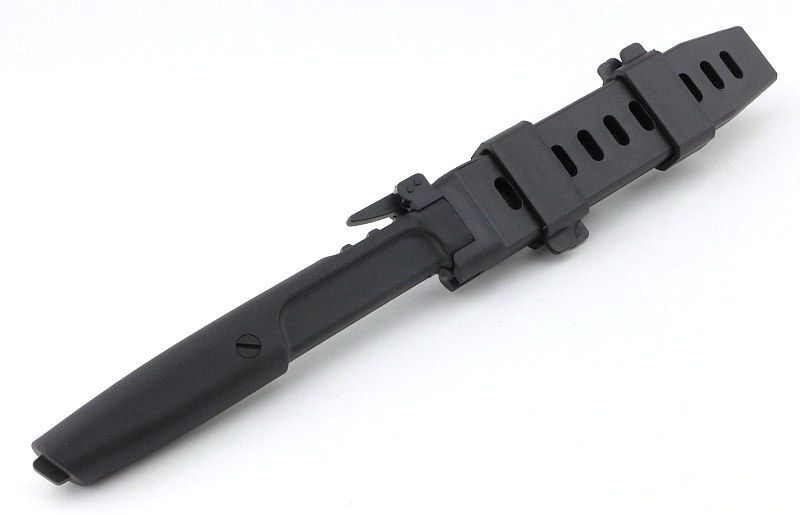
One of the outstanding features of the Mamba is the quick release lever locking system. This is not a new system as it is used in many diving knife sheaths and a few specialist designs, but it is one I’m a real fan of. Easy and quick to use and very secure.
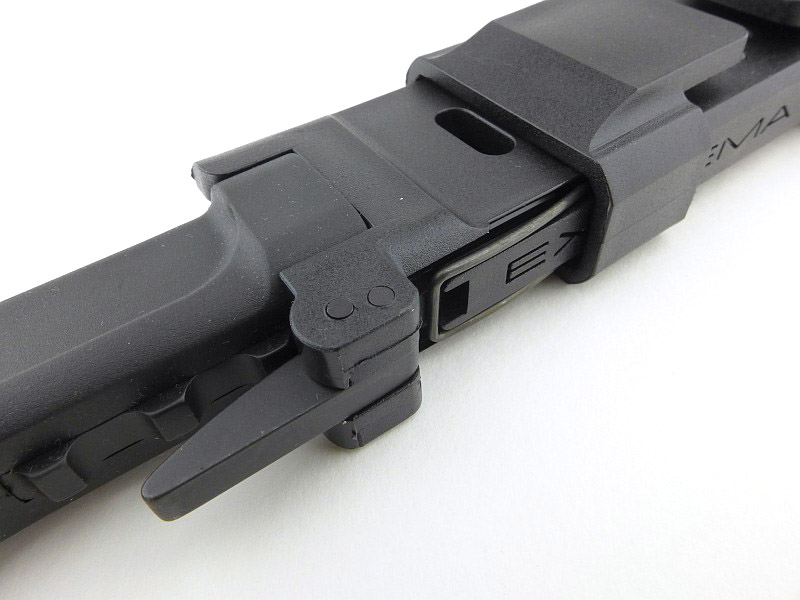
Simply press the lever inwards to release the knife. With the lever pressed in, its wire spring is pushed away from the sheath slightly.
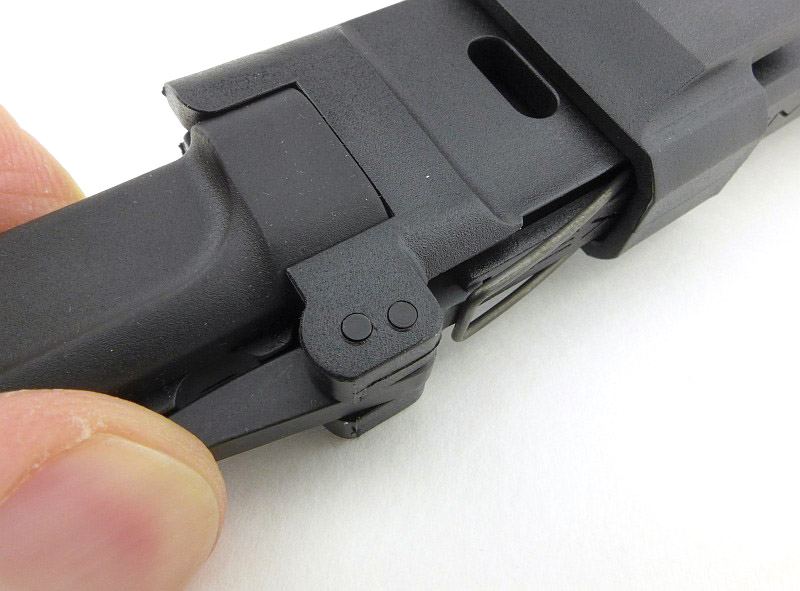
The very unusual sheath has two adjustable plastic clips. They can also be reversed to make the sheath left or right handed. Of course these are used to secure the sheath in place when inserted into PALS webbing.
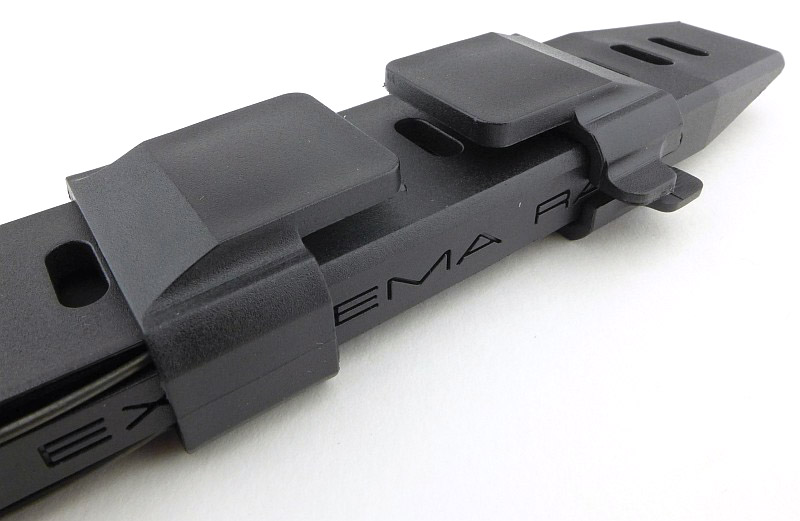
With the clip removed from the sheath you can see the internal locking lugs. One side is open and has finger tabs to allow you to open it further for adjustment or removal.
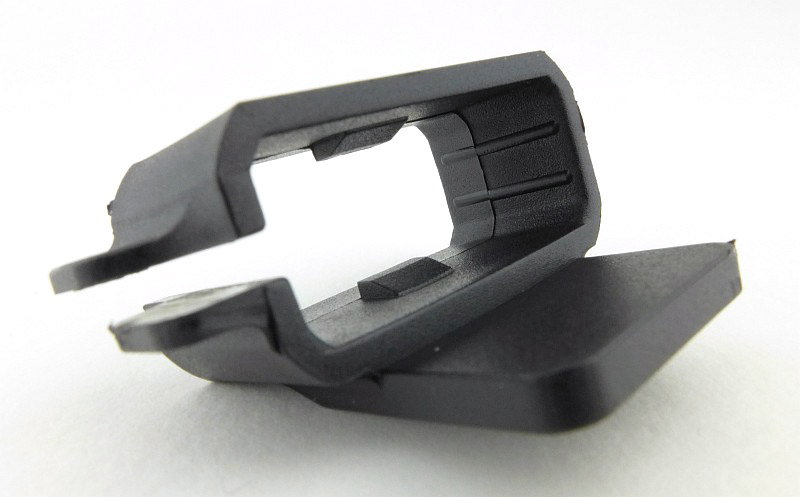
All along the sheath are holes for the adjustable clips to lock into. Should you just want a super low profile knife, you can take the clips off and use the sheath like this.
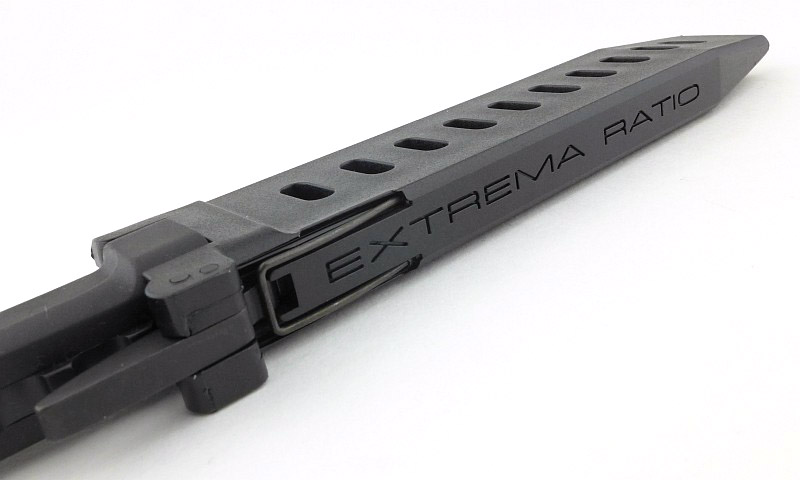
A distinctive design feature of Extrema Ratio knives is the finger grip recess in the Forprene handle.
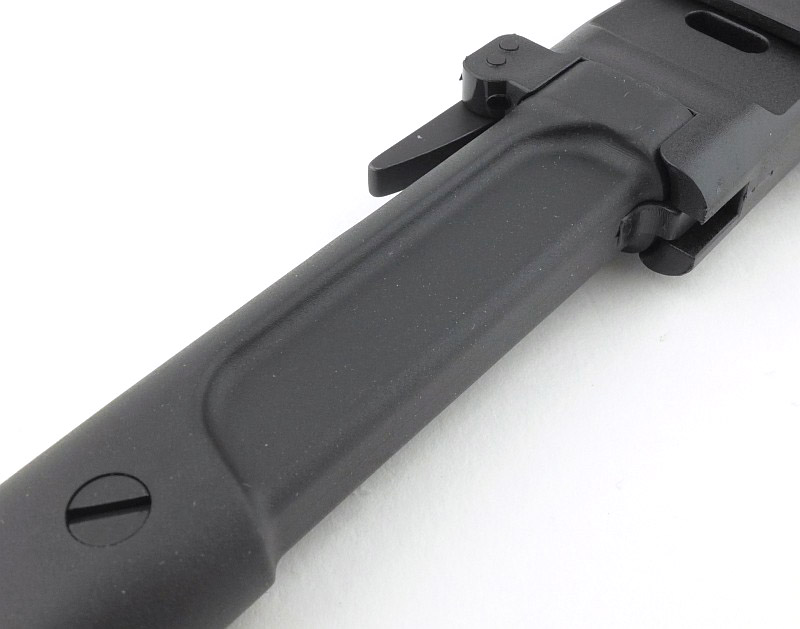
There is a single bolt holding the Forprene handle in place. The screw is a tight fit, and even when fully loosened does not fall out; you will have to undo it and pry it out to take the handle off the full tang.
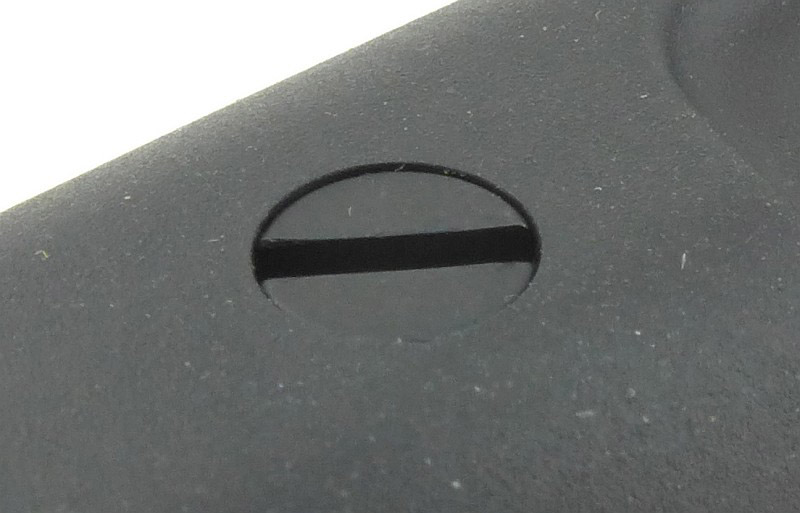
The full tang protrudes slightly from the end of the handle giving you a small striking surface.
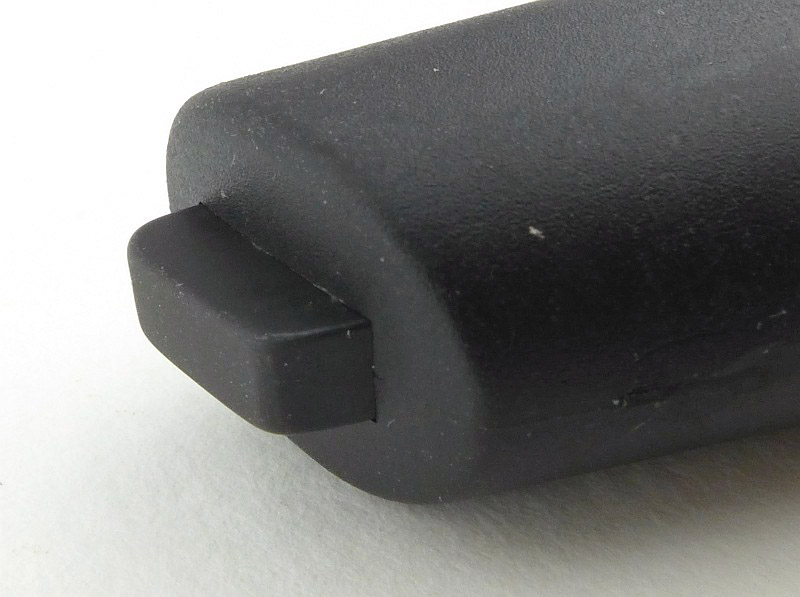
On the spine, near the handle, the model is printed onto the black MIL-C-13924 burnished blade finish, and next to this is the notch that the locking lever fits into to hold the knife in the sheath.
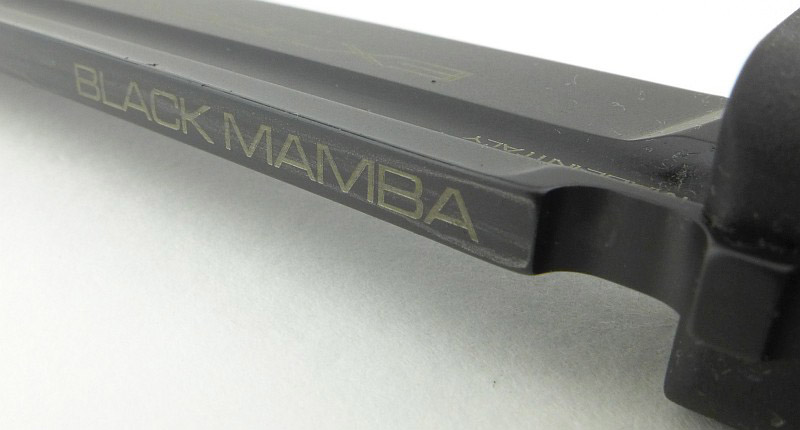
The spine is flat for its entire length. This is an important detail in the operation of the lever lock.
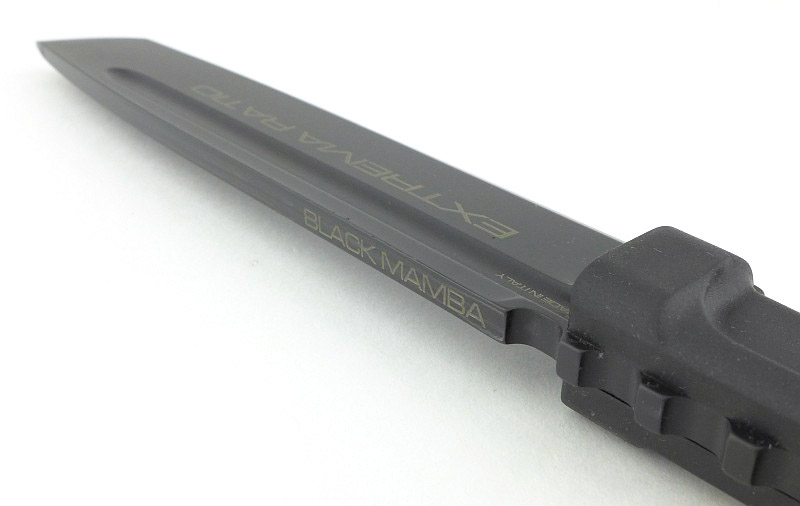
On the right side of the blade it has ‘Extrema Ratio’ printed onto the black finish.
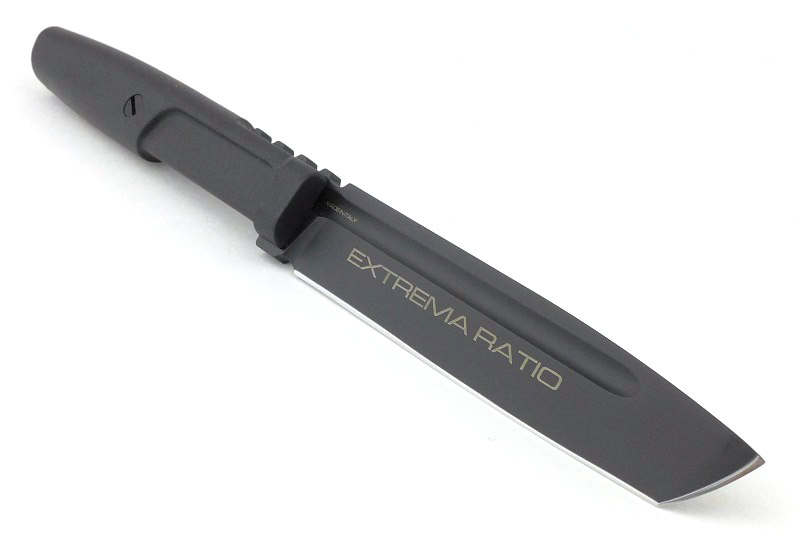
And on the left “58 HRC” is prominently printed with ” Stainless Cobalt Steel” printed underneath.
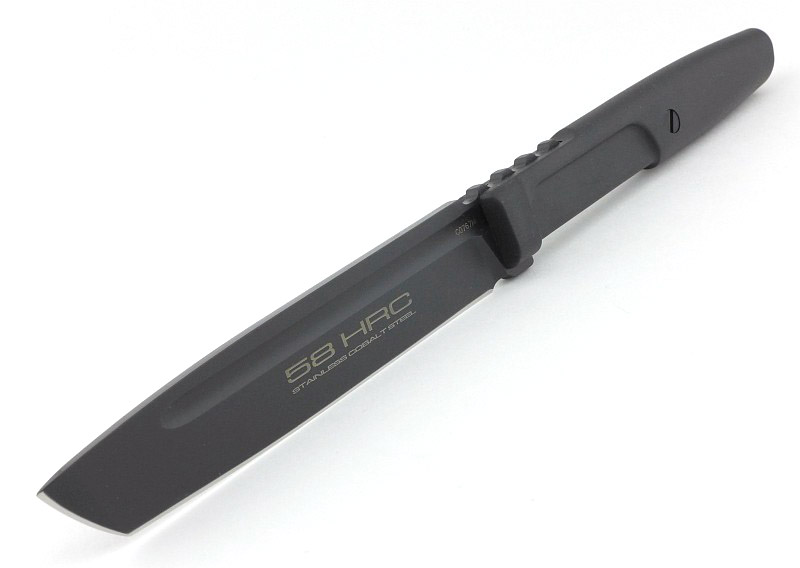
As a key design characteristic of the Mamba is that it fits into PALS webbing loops, the sheath is the starting point for this design. With the sheath fitted in PALS webbing, you want quick access to the blade and one-handed operation, both of which make the lever lock an ideal choice.
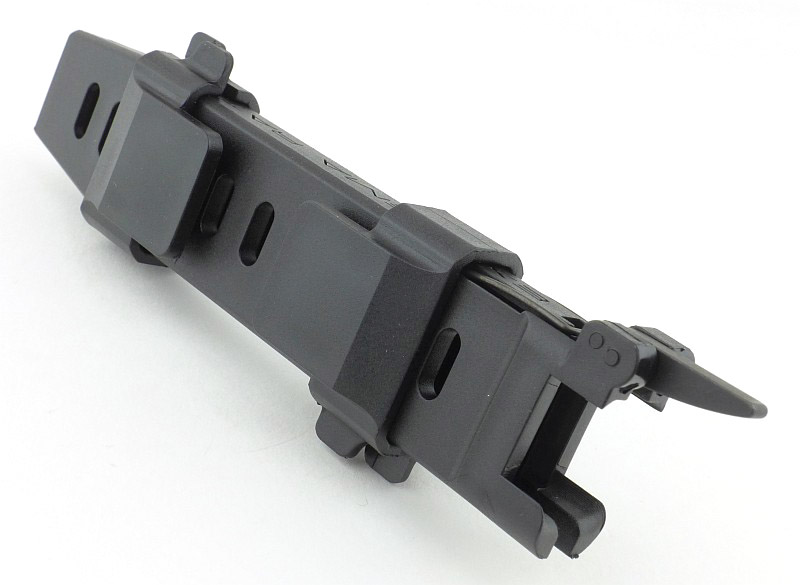
Taking a close look at the side of the lever that touches the knife, you can see several details. The lever has a pivot pin as well as a second pin to restrict the rotation of the lever. At the left end of the lever is the locking lug that fits into the notch in the blade spine. This lug is showing wear of the black coating where it rubs against the spine. Also showing wear is an area to the right of the lever where it gets pressed into the jimping when releasing the knife. Also note the shaping of the plastic sheath which supports and holds the blade end of the handle closely when the knife is locked in place.
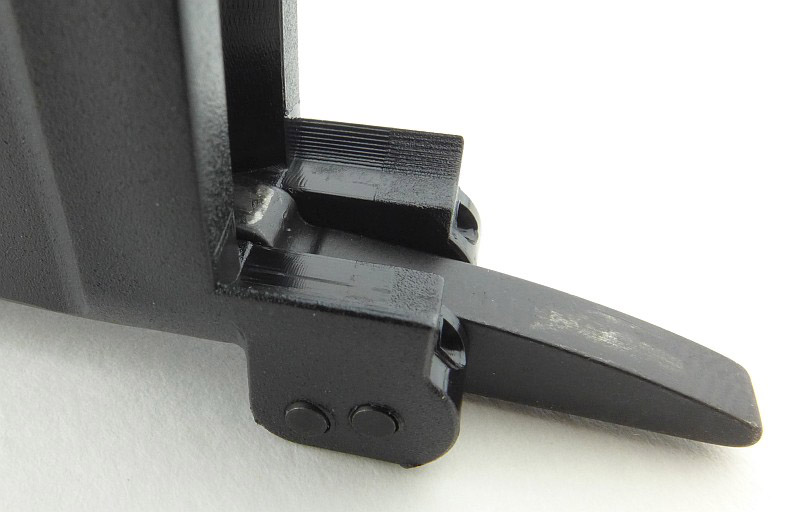
When seen with the deep jimping on the spine, the locking notch doesn’t stand out at all as it is the same size and shape as the rest of the notches in the thumb grip.
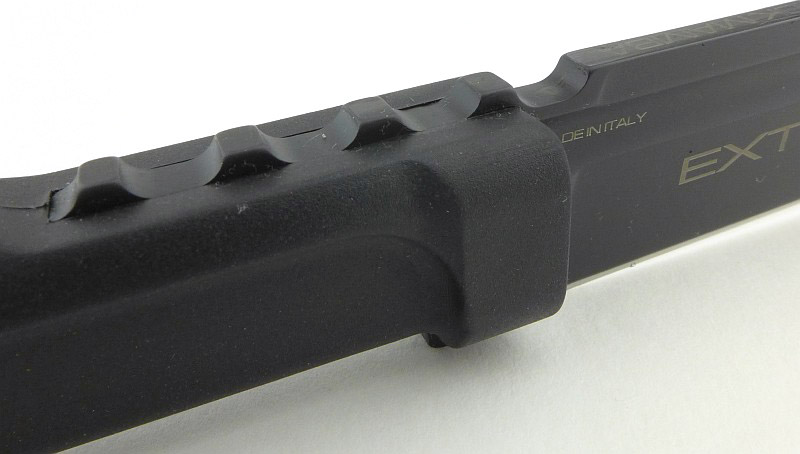
Another view of that locking notch.
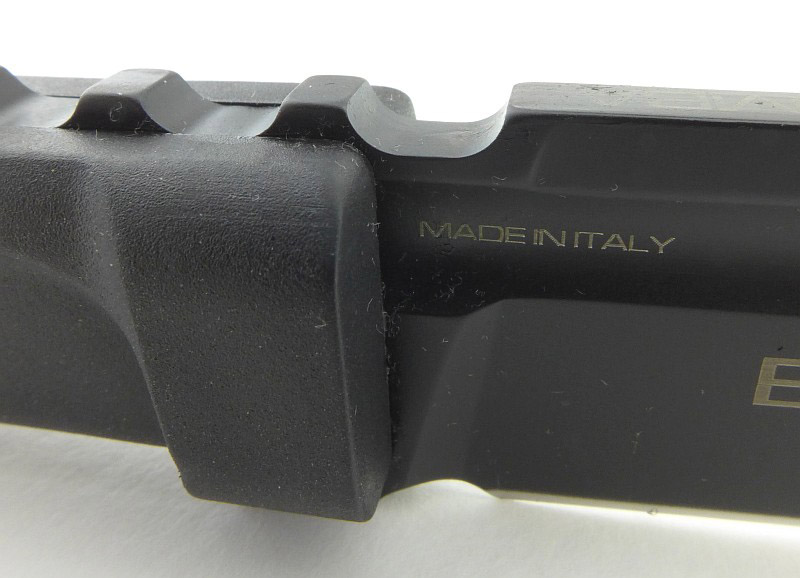
Though a relatively slim blade, there is a full length fuller cut into the full flat grind.
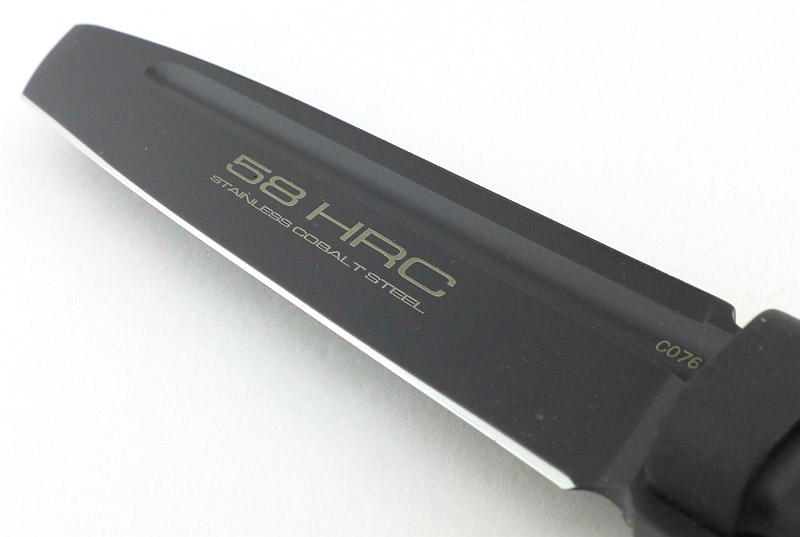
Having a strong Tanto tip, the edge bevel does widen towards the very tip.
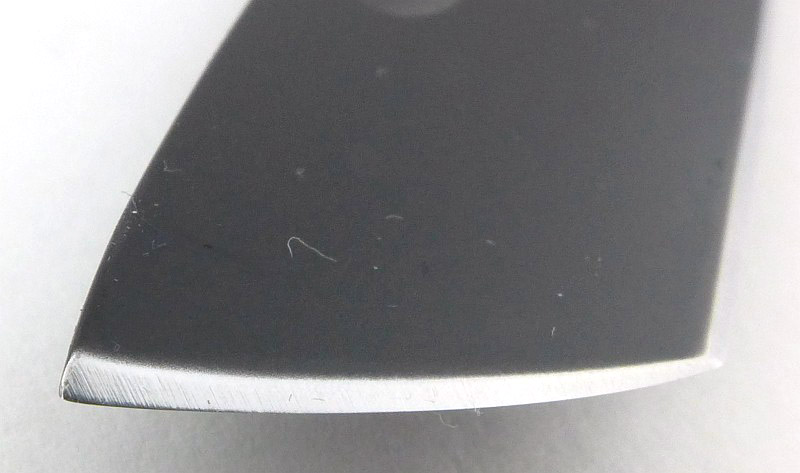
Even in this slim blade there are refinements including a nicely angled plunge line and sharpening choil.
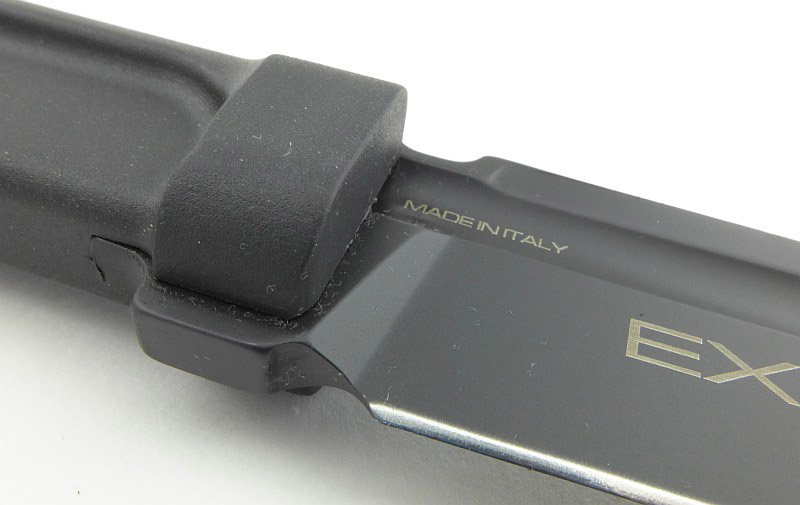
What it is like to use?
For a couple of main reasons, the Mamba has been a bit of a revelation. When I first saw it, I didn’t think all that much of it, but I was wrong, it really works.
The first of those reasons – the quick release lever lock. I’m so pleased to see this in a non-diving knife as it is one of those features I’ve been crying out for in ‘normal’ sheath knives.
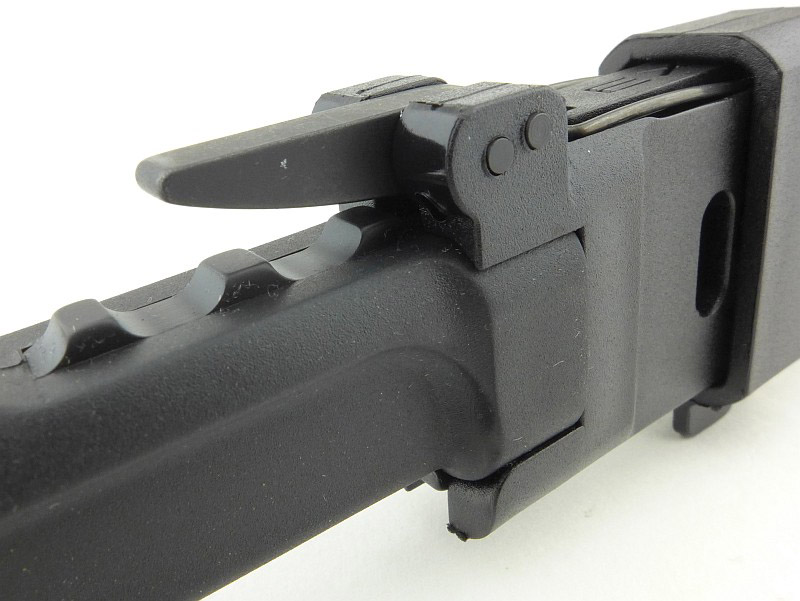
A thumb release lever lock is so intuitive and easy to use as you basically free the blade just taking a normal hold on the handle. Your thumb sits onto the lever instead of the jimping and you squeeze to withdraw the blade.
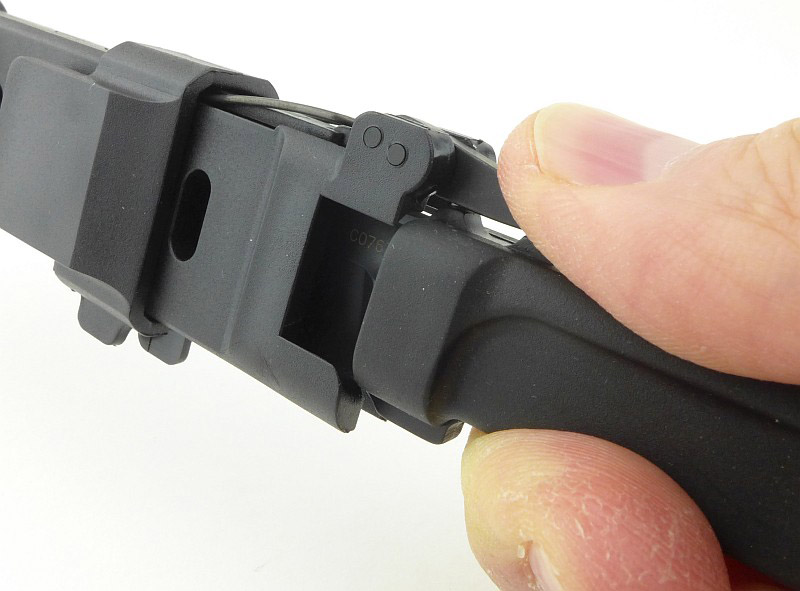
The lever lock does require a slightly different technique when withdrawing or inserting the blade into the sheath. I mentioned this earlier in relation to the full flat spine. You need to keep the spine pressed into the locking lever as you withdraw or insert the blade. If you don’t, the sprung lever pushes the cutting edge into the opposite side of the sheath, both dragging on the blade, and cutting into the plastic. A slight pressure of the blade spine onto the lever and the blade glides in and out easily.
While mentioning ‘gliding’; actually the finish on the blade when new is so matt, it is slightly rough and in certain circumstances, this does actually cause some drag during a cut or when wiping clean. The surface finishing from Extrema Ratio is excellent, and hard wearing, so this ‘feature’ may simply be more noticeable on the finer blade of the Mamba than it is on larger, heavier knives.
There is one major disadvantage with the lever lock design; should you accidentally insert the blade into the sheath the wrong way round, the cutting edge runs directly onto and along the metal locking lever which will seriously damage the cutting edge.
Once in the hand, the Mamba is similar in size to flatware (a table knife) but is clearly something much more serious.
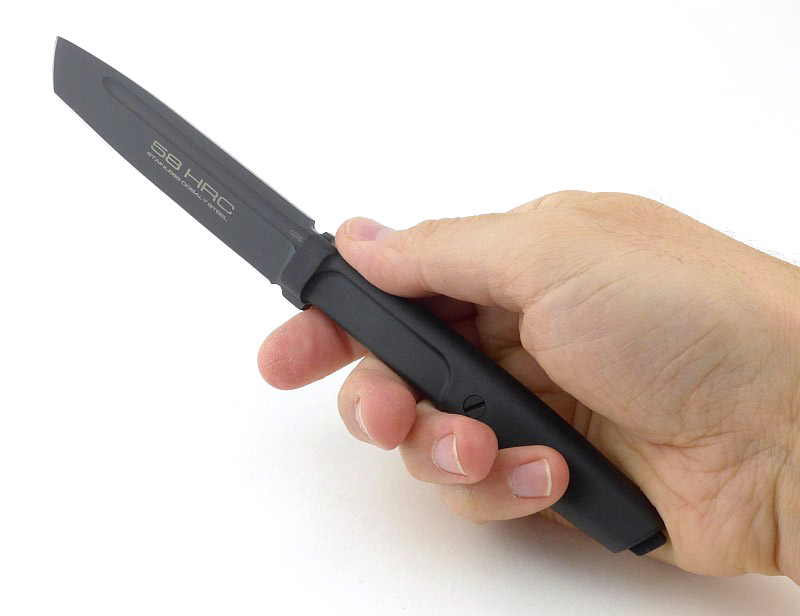
Though it has a slim grip, the finger grip in the handle, combined with the deep jimping under the thumb, give you a really secure hold on the knife.
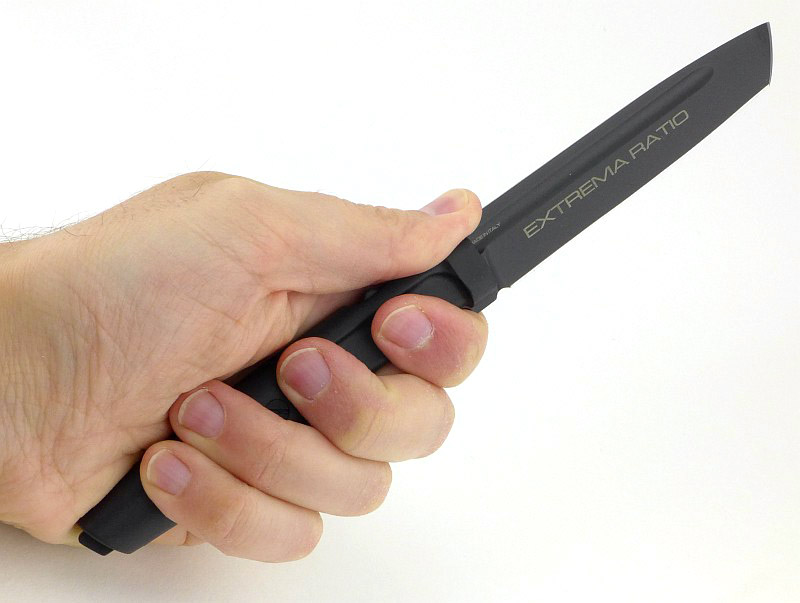
Of course the main reason for the slim design of the Mamba is so that it, and its sheath, can fit into PALS webbing (so is MOLLE compatible) for ease of integration into your gear. Many people carry a knife in their PALs webbing, but either have a folder clipped onto it, a large knife with MOLLE compatible sheath, or (something that makes me cringe) in some cases an unsheathed knife slipped into the loops.
Here I’ve got it fitted to a MOAB 6 bag, but it works even better on the shoulder strap of a backpack.
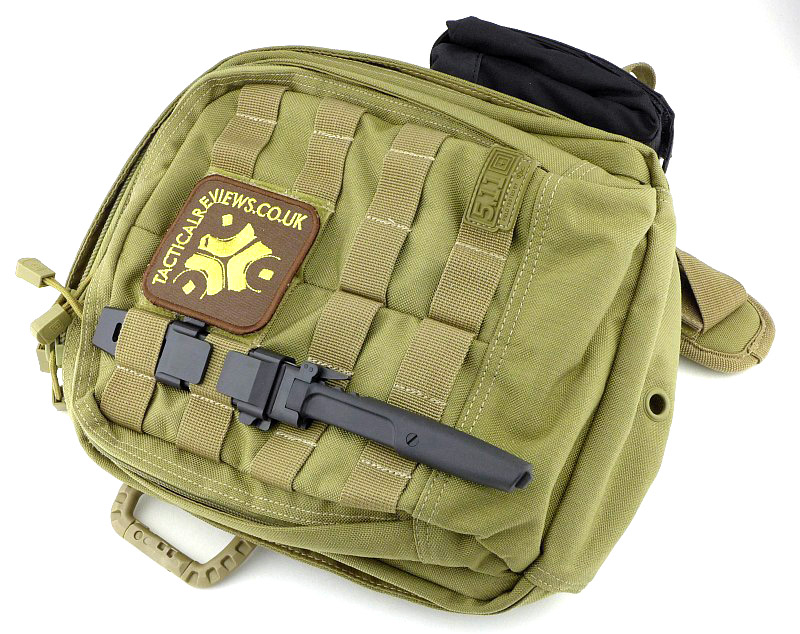
Before fitting, take off the clips and try the sheath in the position you are considering, and check your thumb will land on the locking lever. Then refit the clip nearest to the handle and try once more to check it all works. There is a good reason for checking how well it works at this point.
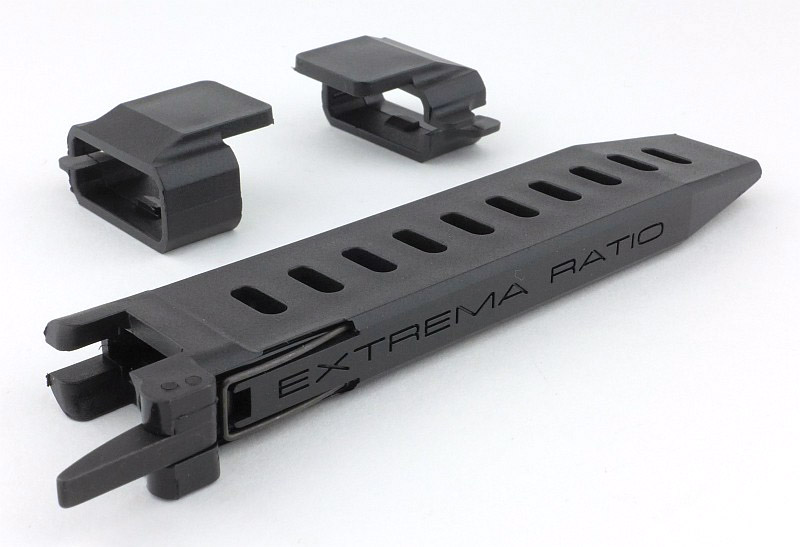
When mounted, the adjustable clips are positioned so that they hold onto one line of webbing. The clips need to be opened on both sides of the sheath to be able to slide, so fitting can be a bit awkward. This is due to the clip near the tip of the sheath having very little room to move as it is pressed against the bag/load carrier on one side. You don’t want to have to do this many times, hence the earlier trial fitting I mentioned.
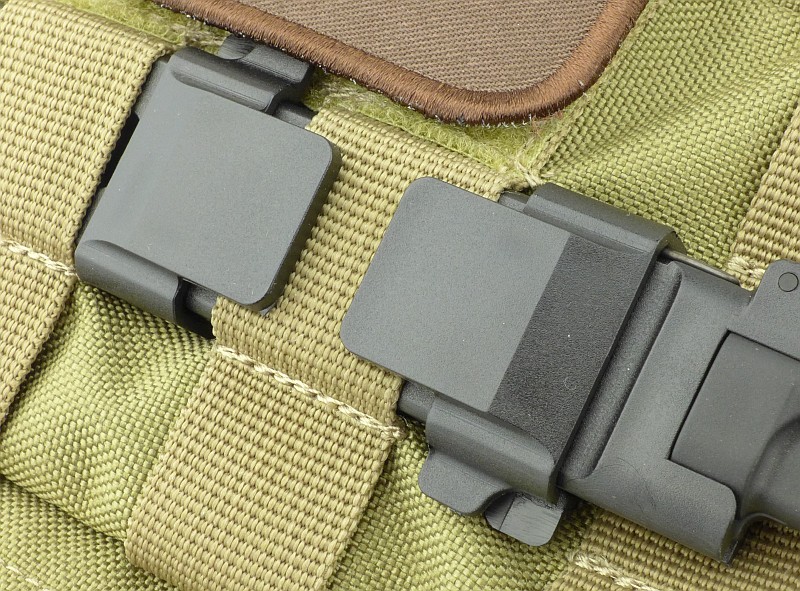
Although you have to fight with one of the clips to fit the Mamba into PALS webbing, the tapered tip of the sheath slides through the loops very easily.
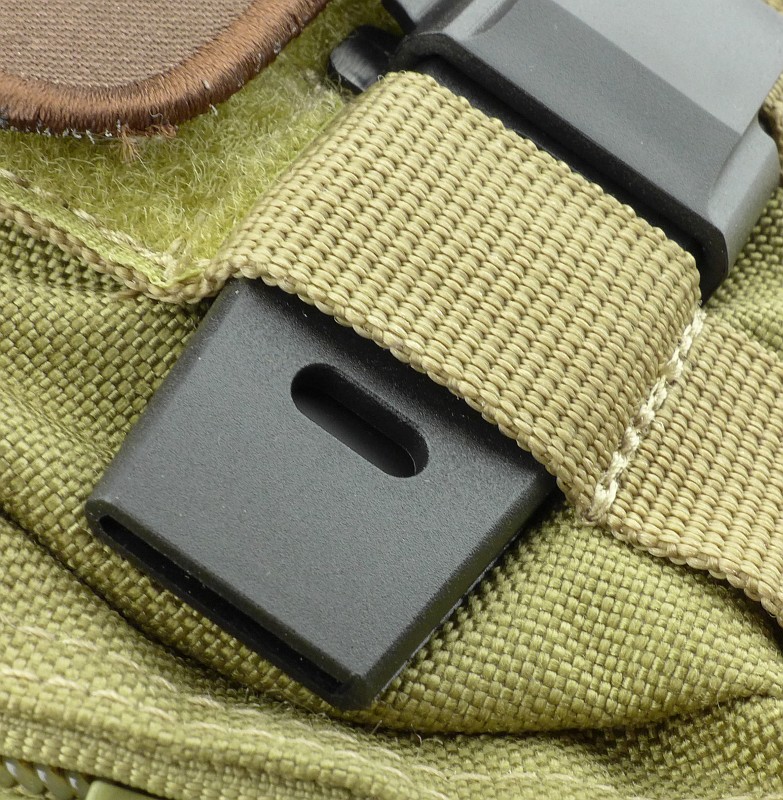
So, being designed to fit into PALS webbing, compared to the Extrema Ratio ‘standard build’ for a knife, it is quite a bit smaller. To give an idea of this, here it is next to the Extrema Ratio TASK J.
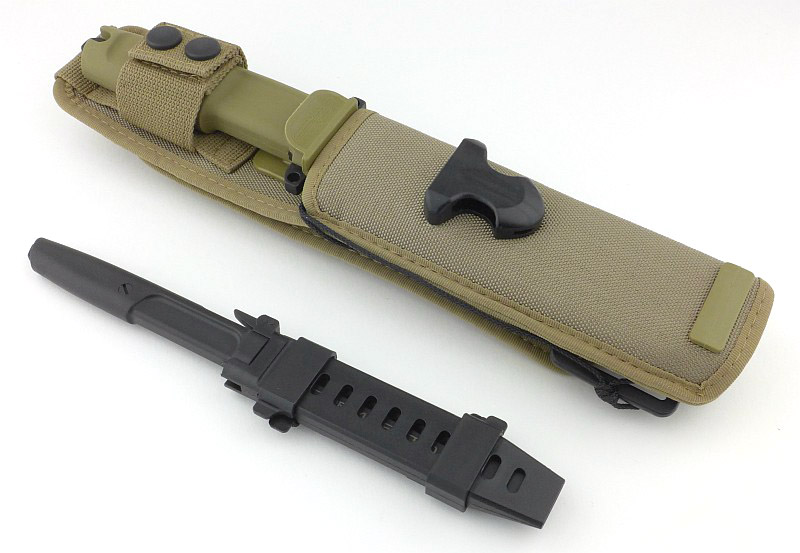
And unsheathed as well.
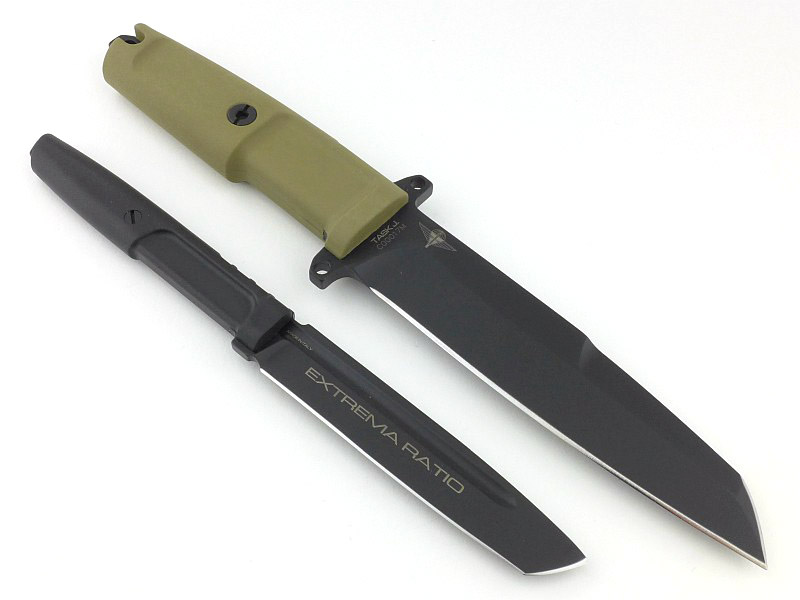
Initially the Mamba is not a knife I would have been that excited about; a slim knife designed to fit into PALS webbing. Useful maybe, but not that exciting. This is certainly not how I feel about it now after spending time with it.
In many ways, Extrema Ratio got me hooked with this one by using the lever lock. I just hope they introduce this for a few other models, including the larger knives. On top of that is the fact that the more you use knives, the more you realise you don’t need as much knife as you thought you might. So, often people carry around seriously heavy duty tools that are never really put to use. In terms of cutting power, the Mamba is more than capable of most everyday jobs and its slimmer blade (though not weak at 3.8mm thick) makes many cutting jobs easier. It really is a multi-purpose ‘utility blade’, in all the best possible meanings of that term.
If only Extrema Ratio could include a belt loop fitting, perhaps sliding over the sheath like the MOLLE clips do, as I would like to be able to carry the Mamba securely without a load carrier or backpack. Light, slim, easy to work with and an excellent quick release lever lock for sheath retention, I’ll be carrying this whenever I can.
Review Summary
The views expressed in this summary table are from the point of view of the reviewer’s personal use. I am not a member of the armed forces and cannot comment on its use beyond a cutting tool or field/hunting knife.
Something that might be a ‘pro’ for one user can be a ‘con’ for another, so the comments are categorised based on my requirements. You should consider all points and if they could be beneficial to you.
| _______________________________________________ | _______________________________________________ |
| Things I like | What doesn’t work so well for me |
| _______________________________________________ | _______________________________________________ |
| Quick Release Lever Lock used to retain the knife. | Can be very difficult to adjust the MOLLE clips when fitted into the PALS webbing. |
| Slim and Versatile Blade. Handles as easily as flatware. | No Belt Loop. |
| The Sheath fits Directly into PALS webbing loops. | Black Blade finish can ‘drag’ when cutting. |
| Secure Grip provided by the finger groove and heavy jimping. | Inserting the blade the wrong way round can blunt the blade. |
| Ambidextrous. |
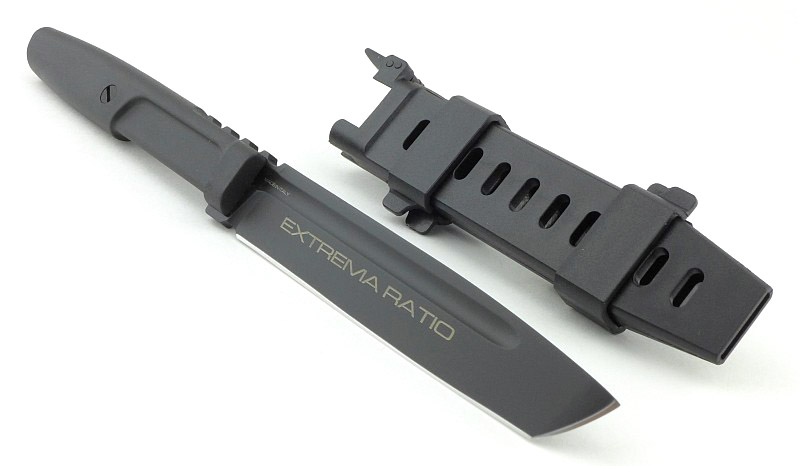
Discussing the Review:
The ideal place to discuss this reviews is on a forum. If you started reading the shorter forum version of the review, but followed the link this full exclusive review, please return to that forum to discuss the review there.
If you read the review entirely on Tactical Reviews, please consider one of the following to join in any discussion.
EdgeMatters – Sponsored Reviews (UK based Forum for Knife Makers and Collectors)
BladeForums – Knife Reviews (US based Forum for Knife Discussion)
CandlePowerForums – Knife Reviews Section (Largest and Friendliest Flashlight Community Forum)

